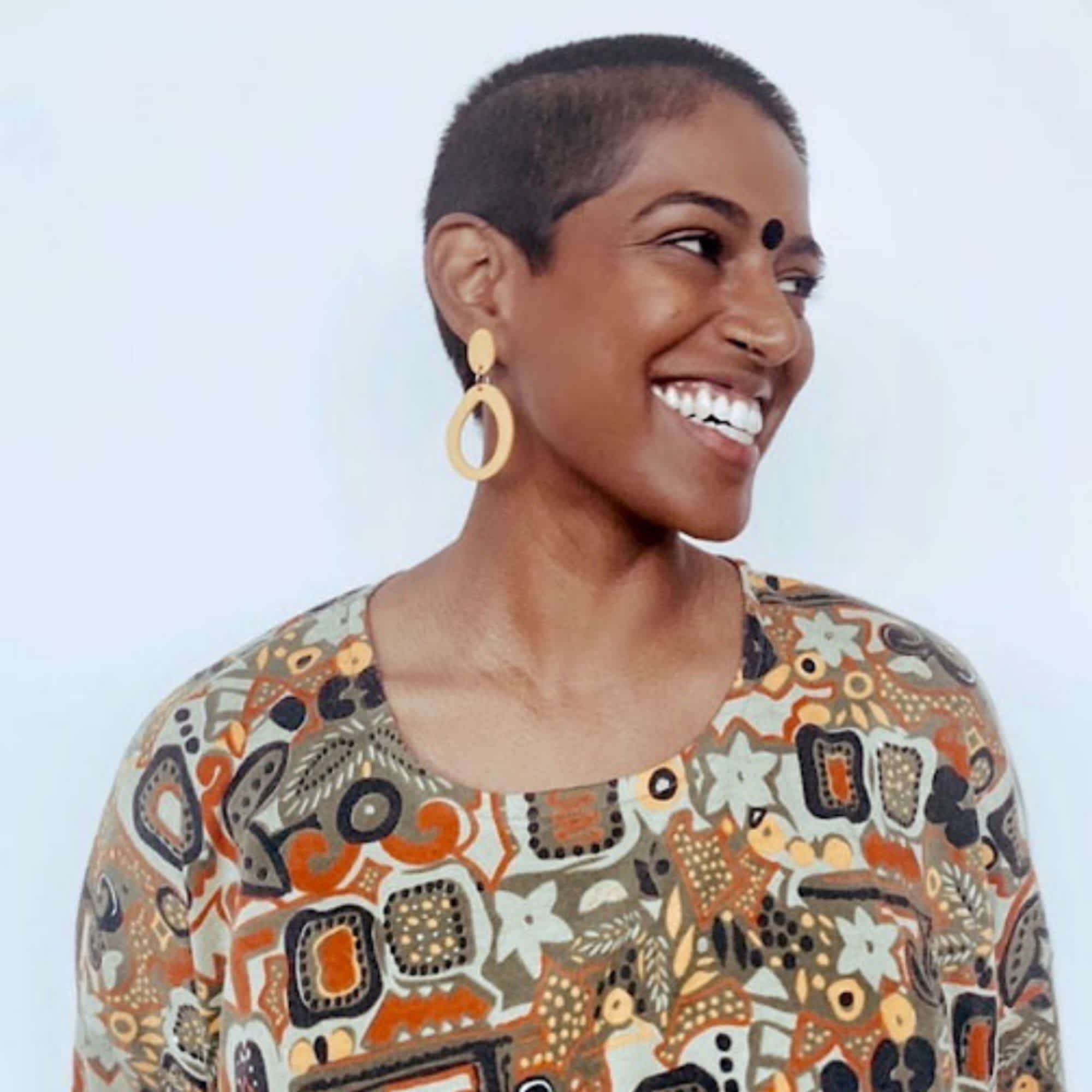
- POPSUGAR Australia
- Living
- 5 Women in Male-Dominated Industries on Their Experiences with Gender Bias in the Workplace
5 Women in Male-Dominated Industries on Their Experiences with Gender Bias in the Workplace


Matrix and NYX Cosmetics have teamed up with POPSUGAR Australia to bring you the Unstoppable Class of 2023. Together, we’re dedicated to heroing the voices of women, people who identify as women, and non-binary people who are powering a brighter future and making an important difference – because the next gen is unstoppable. We will deliver personal essays from the individuals who are making a name for themselves. You can find all the pieces here.
Most — if not all — women, have experienced gender bias at their place of work at some point. Sometimes, the subtly of the bias paired with the fact that we’re simply used to men being “in charge”, means that this bias can affect us subconsciously for years.
Whether you’ve been hired based on how you look rather than your ability to do the job, felt as though part of your contract means flirting with your manager, or you’ve directly been spoken down to due to your gender, gender bias in the workplace exists in many forms. Unfortunately, it’s still prevalent today.
But I’m here to tell you that we can overcome it. As long as we have open conversations with each other, share our stories and continue to stand up for gender equality, we can move through the gender bias together and help close the gap.
In celebration of the International Women’s Day, we’ve asked five women from male-dominant industries, about their experiences with gender bias in the workplace.
These are their stories.

Shamane Tan, Chief Growth Officer at Sekuro
“Cybersecurity is a world where we are constantly in deep need of new talent. Diversity and creativity in our thinking and mindset, from how we hire, attract and retain talent, is required in our field. Stereotypical biases in the cybersecurity world can make groups from unconventional backgrounds (whether it is the differences in gender, cultural, backgrounds and experiences) feel like they don’t belong — no matter how qualified or experienced they are.
“Over time, to overcome them, I needed to push past caring about what people think or expect of me. The key is to believe in yourself first, and from there, you will become the best version of yourself. If we were to continue holding ourselves back due to any inner doubts of what others might think, then we will never reach the best outcomes for ourselves.
“I do find it can be incredibly powerful to have both men and women leaders who are role-modelling at the frontiers actively and vocally empowering the newer generation in this field. As we are intentionally supportive of one another, we can ensure that there is true progression in changing the perception of any former industry bias or stigma of people.
“This can be in the way of championing the next generation with budding or potential talent, mentoring colleagues, recognising and supporting their successes, as well as giving other minorities of male-dominated industries a platform to have their voices heard.”

Sophia Pace, Marketing & Strategic Partnerships, Avertro
“While gender bias still exists, we must move past this being the core narrative. We should celebrate the progress that’s been made, prioritise systemic issues, such as closing the pay gap and use days like this to focus on empowering and building programs to help women become more confident.
“Within STEM, many companies are attempting to achieve the right balance by actively finding and encouraging women to fill traditionally male-dominated roles. Unfortunately, some women continue to doubt their abilities and, as a result, do not get paid what they deserve. Why is this happening? Not enough women are actively championing this.
“We must educate younger leaders on navigating growth within the workforce, how to negotiate for the right pay, and how to identify non-obvious skills that are transferable. It is time for today’s leaders to use what they missed as lessons to impart on emerging leaders. Much of what I’ve learned is from men, because there weren’t enough female leaders around. Companies and their female leaders should reflect, get real with what they missed out on, and empower other women around them, especially those just starting their careers.”

Anna Komok, CMO, HypeAuditor
“Despite worthy rhetoric of gender inequality within the IT sector, women remain disproportionately under-represented in this industry.
“When I first started out in tech, I found it very intimidating to be the only woman in the room. I found it challenging to speak up, have my voice heard, or challenge others. The pressure of conforming to a male culture in order to fit in was also emotionally taxing. It took me years to find the right company, with the right supportive culture to build up my confidence and be assertive enough to have my voice heard and most importantly, respected.
“At HypeAuditor, the gender distribution is 50-50 and we invest in empowering women through tailored training programs and access to resources, to build a working environment and culture where women can thrive. Feeling supported, having women champion each other at work and having male allies in the workplace were key to help me assert myself and my work within the organisation, as well as the industry.
“It is not enough for a tech organisation to want to reach gender parity in senior roles. If women don’t feel empowered, supported and valued and if the organisation is not committed to recognising and getting rid of gender bias, these women will leave. Hiring or promoting more women in leadership positions just to meet quota numbers is very short sighted and it is often where tech companies go wrong.”

Christina Lord, Product Marketing Lead, Shopify
“Product and engineering teams in tech are male dominated, which makes things particularly challenging when you have impostor syndrome. Early in my career, as someone who works closely with product, I was afraid of speaking up or challenging ideas because of gender biases in the tech world that made me feel unqualified or inexperienced. Not only that, I was capped by constant anxieties about being ‘unqualified’ or ‘inexperienced’ by male peers and leadership.
“In a male-dominated industry, biases against women accumulate to make it challenging for women or those who identify as women to be themselves. You may feel like you have to adopt a different persona to fit in — such as changing what you say, what you wear, how you speak and even how you think.
“However, being someone else never works out. It’s mentally draining and just adds to the stress of an already rapidly changing environment. In reality, the qualities most often associated with women are highly valued in business — leadership training is all about communicating more, being more empathetic, and being more collaborative. These are traits that I believe make me a better leader and teammate. This is why my advice for other women working in male-dominated industries is to ignore those biases, use your differences to your advantage, and protect your spirit.”

Priyanka Bromhead, Founder of We Are the Mainstream
“The education system is a colonial institution, steeped in a history of misogyny, classism, racism and ableism. While education as an industry is heavily represented by women in classroom and face-to-face teaching roles, as you slowly work your way up the ladder, it is hard to ignore how school-based senior executive positions are overwhelmingly dominated by White folk.
“Further up the chain, in corporate roles and within corporate executive positions, there is an obvious representation of women in leadership, but it is also blatantly white. The lack of intersectionality in these powerful leadership roles, not to mention that many of these individuals have very little lived experience as teachers themselves, is a concern as they are the ones who shape policy that impacts the very diverse staff, student and community demographic that makes up the Department of Education (DoE).
“As an employer, the DoE boasts policies of anti-racism, wellbeing, diversity and inclusion and employs Black-cladding and the use of children of Colour highly visible in marketing — all for optics — with very little practice of poorly constructed policies, within their statewide workplaces and leadership teams. There are very few avenues to challenge many of the archaic and industrial-revolution-born stipulations outlined by the DoE. The red tape and bureaucracy has been designed to keep those in their ivory towers accountability-free and for those of us with traumas at the hand of the system bungled up with completing this form or that.
“While on the ground, the NSW Teachers Federation offers some support. However, in my own experience and others who’ve experienced intersecting aggressions against their race, religion, ethnicity, sexuality, ability, gender or age, we are often left on the wayside as the Union itself struggles with its lack of understanding and awareness of cultural competence and intersectional frameworks.”



